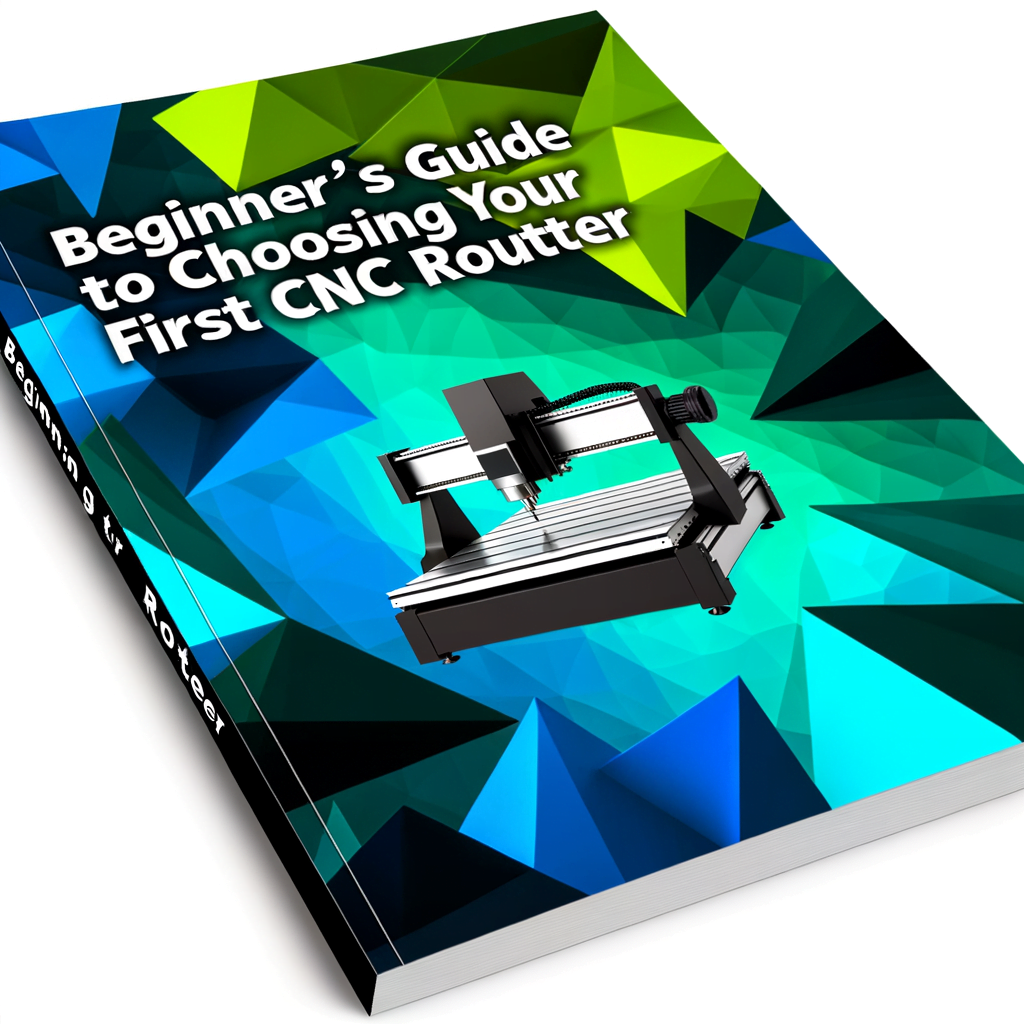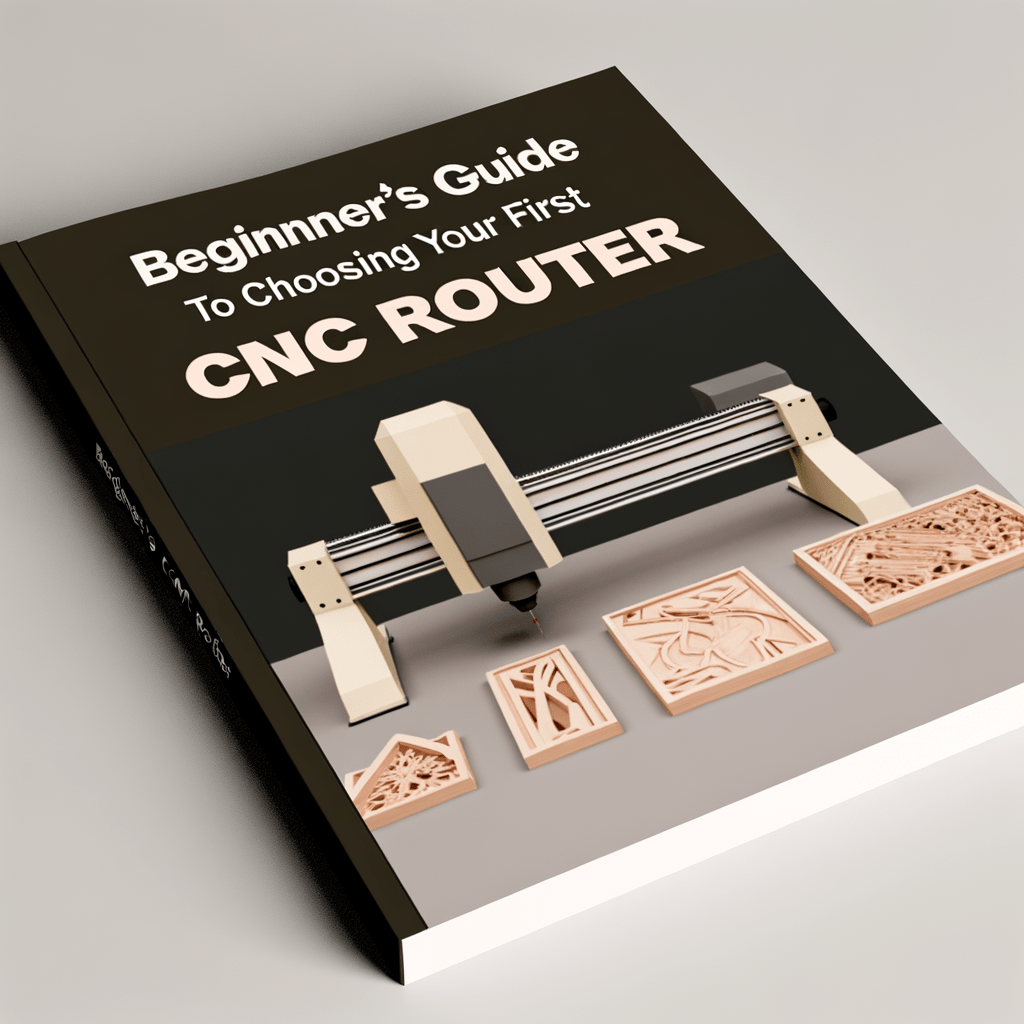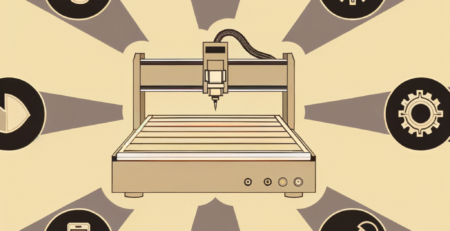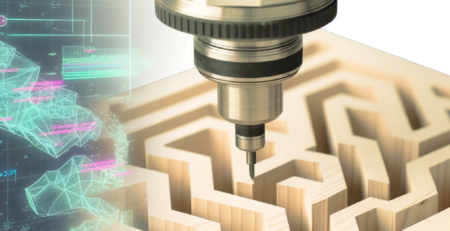Beginner’s Guide to Choosing Your First CNC Router
Sommario
“Crafting Precision: Your Journey to Selecting the Perfect CNC Router Starts Here”
introduzione
Choosing your first CNC router can be a daunting task, given the wide range of options available in the market. A CNC (Computer Numerical Control) router is a cutting machine that is used for carving, engraving, and shaping materials like wood, composites, aluminum, plastics, and foams. It is a valuable tool for hobbyists, woodworkers, and manufacturers alike, offering precision and automation that can significantly enhance productivity and creativity. This beginner’s guide aims to provide essential information and considerations to help you select the right CNC router that fits your needs, budget, and workspace, ensuring a successful entry into the world of CNC machining.
Understanding CNC Router Basics: A Beginner’s Guide
Title: Beginner’s Guide to Choosing Your First CNC Router
Embarking on the journey of selecting your first CNC router can be an exhilarating yet daunting task, especially for those who are new to the world of computer numerical control. Understanding the basics of CNC routers is crucial to making an informed decision that aligns with your needs and aspirations. This guide aims to demystify the process, providing you with the foundational knowledge required to choose a CNC router that will serve as a reliable tool in your crafting or manufacturing endeavors.
At its core, a CNC router is a computer-controlled machine that is capable of cutting, carving, engraving, and shaping materials such as wood, composites, aluminum, plastics, and foams. The precision and repeatability of CNC routers make them indispensable in various industries, from woodworking and metalworking to sign making and aerospace engineering. The key to their functionality lies in their ability to translate a digital design into a tangible, physical product with minimal human intervention.
When considering your first CNC router, it is essential to evaluate the size of the machine. The working area, which is the maximum size of material the machine can handle, should be large enough to accommodate your projects. However, it is equally important to ensure that the machine fits within your available workspace. Additionally, the size of the router often correlates with its power and capabilities, so it is important to strike a balance between the physical footprint and the machine’s potential to grow with your needs.
Another critical aspect to consider is the spindle, which is the part of the machine that does the actual cutting. Spindles come in various power ratings, measured in horsepower or watts, and higher power generally translates to the ability to cut tougher materials and at faster speeds. However, for beginners, a less powerful spindle may suffice for learning the ropes and working with softer materials.
The precision of a CNC router is determined by its drive system, which can be either lead screw, ball screw, or rack and pinion. Each system has its own advantages and trade-offs in terms of accuracy, speed, and maintenance. For instance, ball screws are known for their precision and smooth motion, but they can be more expensive than lead screws, which are simpler and more cost-effective but may have more backlash and wear over time.
Software compatibility is another vital factor to consider. The CNC router must be compatible with the software you intend to use for designing and programming your projects. Some machines come with proprietary software, while others are compatible with popular third-party programs. It is important to choose a router that works seamlessly with the software you are comfortable using or willing to learn.
Lastly, support and community are invaluable resources for beginners. A CNC router with a strong user community and responsive customer support can significantly ease the learning curve. These resources can provide guidance, troubleshooting tips, and inspiration for projects, which are especially beneficial when you are just starting out.
In conclusion, choosing your first CNC router involves a careful consideration of size, spindle power, drive system accuracy, software compatibility, and the availability of support. By taking the time to understand these fundamental aspects, you can select a machine that not only meets your current needs but also has the potential to grow with your skills and ambitions. Remember, the right CNC router is not just a purchase; it’s an investment in your ability to bring creative visions to life with precision and efficiency.
Top Features to Consider When Selecting Your First CNC Router

Title: Beginner’s Guide to Choosing Your First CNC Router
Embarking on the journey of selecting your first CNC router can be an exhilarating yet daunting task, given the myriad of options available in the market. A CNC router is a computer-controlled cutting machine that can carve, engrave, and shape various materials, making it an indispensable tool for hobbyists and professionals alike. To ensure that you make an informed decision, it is crucial to consider several key features that will significantly impact the machine’s performance and the quality of your work.
First and foremost, the size of the CNC router is a pivotal factor. The size of the machine dictates the scale of work you can undertake. For beginners, a smaller machine might be more appropriate, as it requires less space and is generally less expensive. However, it is important to anticipate future needs; if you plan to work on larger projects, investing in a machine with a larger working area might be more cost-effective in the long run.
The spindle, which is the heart of the CNC router, is another critical feature to consider. The spindle’s power, measured in horsepower or watts, determines the router’s ability to cut through different materials and the speed at which it can operate. A more powerful spindle can handle harder materials and more demanding jobs, but it may also come with a higher price tag. For beginners, a spindle with moderate power is usually sufficient for a wide range of materials and projects.
Precision is a hallmark of CNC routing, and the machine’s accuracy is largely dependent on its drive system. There are generally two types of drive systems: stepper motors and servo motors. Stepper motors are more common in entry-level machines and are suitable for most beginner applications. They are reliable and provide ample precision for a variety of projects. Servo motors, on the other hand, offer higher precision and speed but at a higher cost. For those starting out, stepper motors will typically meet your needs without overextending your budget.
The construction and durability of the CNC router are also paramount. A robustly built machine will not only last longer but also maintain accuracy over time. Look for a CNC router with a solid frame, usually made of steel or high-strength aluminum, which will minimize vibrations during operation and enhance the quality of the cuts.
Ease of use is another essential aspect, especially for those new to CNC routing. A user-friendly interface and software that is compatible with common design programs will make the learning curve less steep. Additionally, consider the level of support and resources provided by the manufacturer, such as tutorials, customer service, and community forums, which can be invaluable for beginners.
Lastly, the availability of accessories and expandability should be taken into account. As you grow more proficient, you may want to add features such as dust collection systems, additional spindles, or upgraded software. Ensure that the CNC router you choose is capable of accommodating these enhancements without requiring a complete overhaul.
In conclusion, selecting your first CNC router involves a careful evaluation of size, spindle power, precision, construction, ease of use, and future expandability. By considering these top features, you can choose a machine that not only fits your current needs but also supports your growth as you advance in the realm of CNC routing. Remember, the right CNC router is a long-term investment that can unlock endless creative possibilities.
Step-by-Step Process for Choosing the Right CNC Router for Beginners
Title: Beginner’s Guide to Choosing Your First CNC Router
Embarking on the journey of selecting your first CNC router can be an exhilarating yet daunting task, especially for beginners who are navigating the complex landscape of CNC machinery. A CNC router is a computer-controlled cutting machine that can carve, engrave, and shape various materials, making it an indispensable tool for hobbyists and professionals alike in woodworking, metalworking, and plastic fabrication. To ensure a wise investment and a machine that aligns with your needs, a step-by-step process is essential.
The initial step in choosing the right CNC router involves a thorough assessment of your specific needs and projects. Consider the types of materials you plan to work with, such as wood, plastics, or metals, as each material may require different power levels and spindle types. Additionally, the size and complexity of the projects you intend to undertake will dictate the size of the work area you need. A larger table size will accommodate bigger projects, but it will also take up more space and potentially cost more.
Once you have a clear understanding of your requirements, it’s time to delve into the technical specifications of CNC routers. The spindle, which is the part of the machine that does the actual cutting, comes in various power ratings, measured in horsepower or watts. For beginners, a spindle with lower power may suffice for light-duty work, but for more demanding tasks, a more powerful spindle is necessary. Moreover, the spindle’s speed, measured in revolutions per minute (RPM), is crucial as it affects the quality of the cut and the types of materials you can work with.
Another critical aspect to consider is the machine’s drive system, which moves the spindle along different axes. There are generally two types: stepper motors and servo motors. Stepper motors are more common in entry-level machines due to their simplicity and cost-effectiveness. However, servo motors offer higher precision and speed, which might be beneficial for more advanced applications.
Furthermore, the machine’s construction and rigidity play a pivotal role in its performance and longevity. A well-built CNC router with a solid frame made from steel or high-grade aluminum will ensure stability during operation and result in more accurate cuts. It’s also important to look for a machine with a good support system, such as linear guides and ball screws, which provide smooth motion and reduce wear over time.
Software compatibility is another factor that cannot be overlooked. The CNC router must be compatible with the software you intend to use for designing and sending instructions to the machine. Some CNC routers come with proprietary software, while others are compatible with popular third-party programs. As a beginner, you might prefer a machine with user-friendly software that offers a gentle learning curve.
Lastly, after-sales support and warranty are essential considerations. A reliable manufacturer should offer comprehensive support, including customer service, technical assistance, and access to replacement parts. A robust warranty will give you peace of mind, knowing that you’re covered in case of any defects or issues.
In conclusion, choosing your first CNC router is a process that requires careful consideration of your needs, an understanding of the machine’s specifications, and an evaluation of the manufacturer’s support. By methodically analyzing each step, you can make an informed decision that will serve you well as you embark on your CNC machining journey. Remember, the right CNC router will not only fit your current projects but also grow with you as your skills and ambitions expand.
Conclusione
Conclusione:
When choosing your first CNC router, it is essential to consider factors such as the size of the projects you plan to undertake, the materials you will be cutting, the precision required, the ease of use, software compatibility, and your budget. A beginner should look for a machine that is user-friendly, with reliable customer support and a strong community for guidance. It’s also important to balance between affordability and the capability to grow with your skills and needs. Investing in a CNC router with a solid construction and good quality components will ensure longevity and better performance. Ultimately, the right CNC router for a beginner is one that matches their current skills while allowing room for development as they gain experience in CNC machining.





Lascia un commento